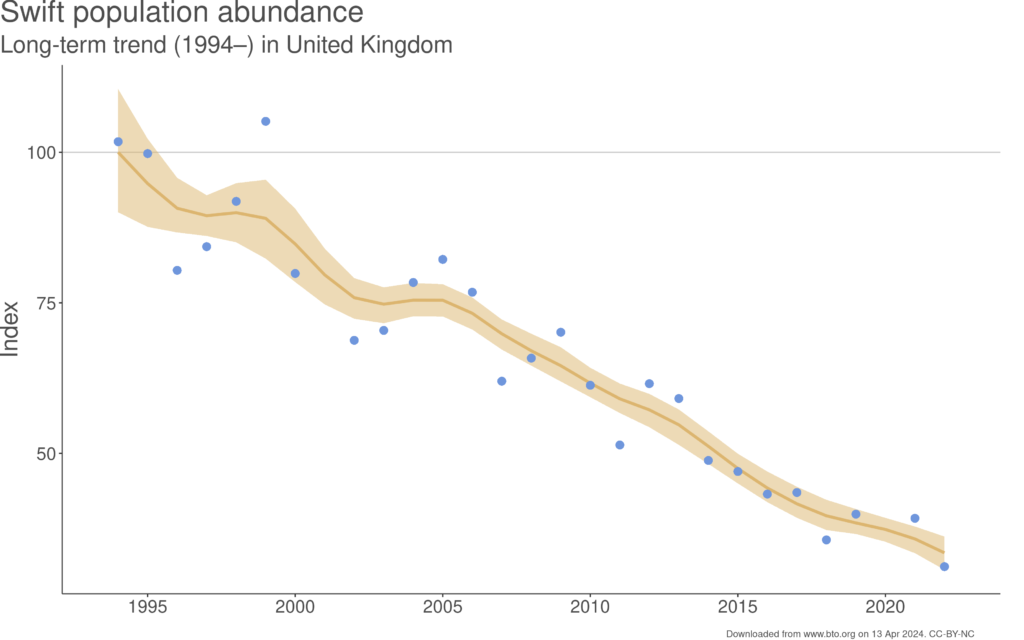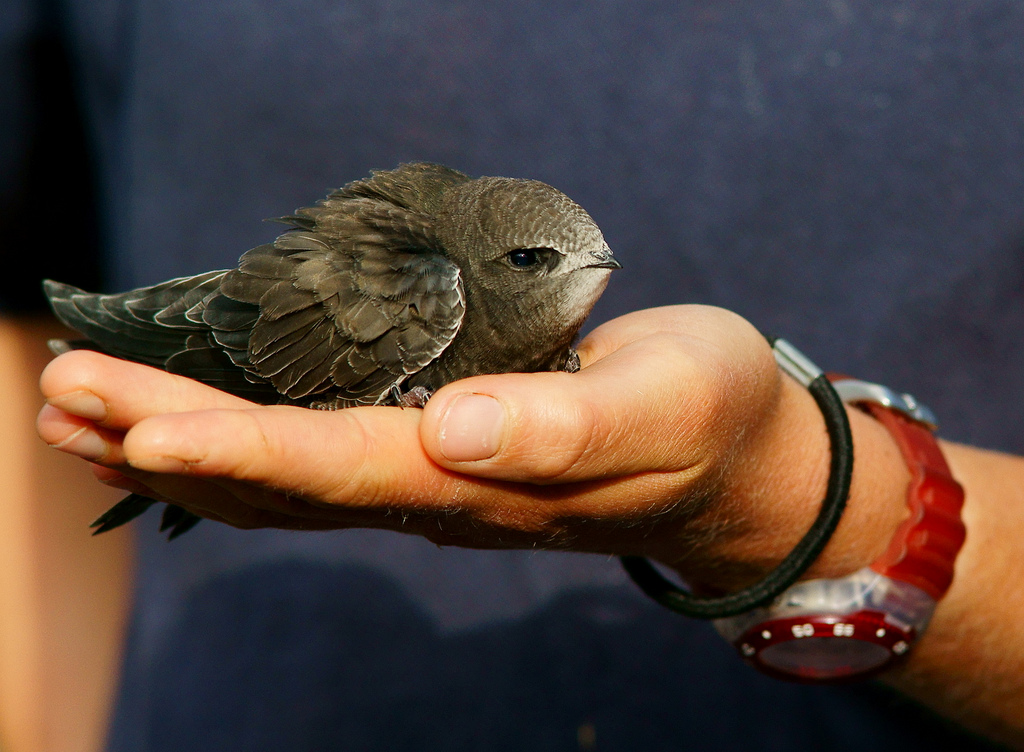The UK’s guardian published an opinion piece this week on the severe decline that they call a “Freefall” of the Swift, a migratory bird that summers in England and winters in Africa. The author laments that this Spring has seen a near complete absence of the migratory species.
A graphic from the British Trust of Ornithology shows the population has declined by more than 95% since 1995.

Can we expect to see more and more such sudden reductions in populations here in the US as well? The West Central Florida coast is host to large number of very dense populations of migratory birds. Tree Swallows, Palm Warblers, Scarlet Tanagers, Savannah Sparrows, and other small seed and berry pollinator and spreader species. These species are abundant for now, but as climate change continues to affect species differently, Ecology Florida’s writers have already noted a delay and reduction in the abundance of some of the above species, specifically Tree Swallows, in Pasco County’s 2024 Spring. Trees and bushes, mostly decorative Holly species, have retained their berries well into April, an unusual occurrence. Learn more about Florida’s migratory species in a lecture provided by Pinallas County’s IFAS extension.
Other species are already in trouble that migrate through our area. Kestrels and Swallowtail Kites visit Florida during their heat-seeking summer migration. Their numbers have already dropped significantly in other states such as North Carolina, Texas, and Georgia, the latter of which having recently listed the species as “rare.”
What comes next? We suggest conservation efforts that protect these and other vulnerable species.


Leave a Reply